Trove
Vintage Fashion for the Modern Girl
Interview: Diane Von Furstenberg, Icon
The wrap dress was only the first of this designer's many innovations
November 5, 2013
In 1970, with a $30,000 investment, Diane Von Fürstenberg began designing women’s clothes. After moving to New York, she met with famed Vogue editor Diana Vreeland who declared her designs “absolutely smashing.” She then had her name listed on the Fashion Calendar for New York Fashion Week, and so her business was created.
After the phenomenal success of the wrap dress, Diane was featured on the cover of Newsweek magazine in 1976. The accompanying article declared her “the most marketable woman since Coco Chanel.”
She re-launched her fashion company, Diane von Fürstenberg (DvF), in 1997, with the reintroduction of her famous wrap dress. The company is now a global luxury lifestyle brand offering four complete collections a year.
We caught up with this fashion icon to discuss design, inspiration, and her new textile line for the home.
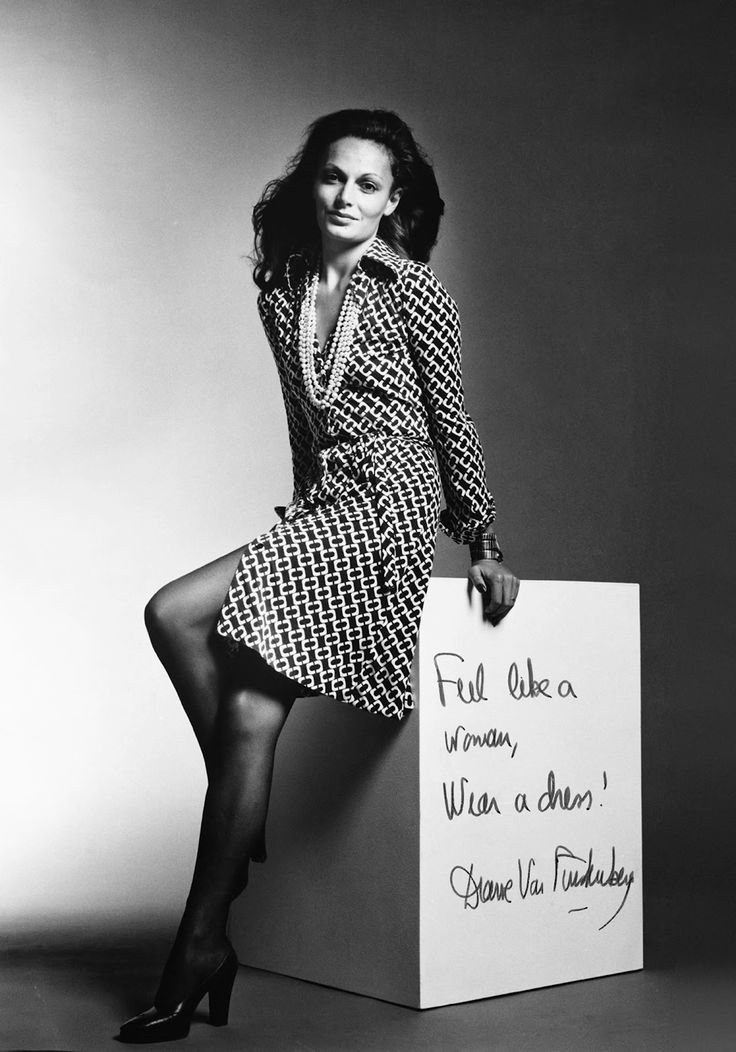
Diane Von Furstenberg wearing her iconic wrap dress in the '70s
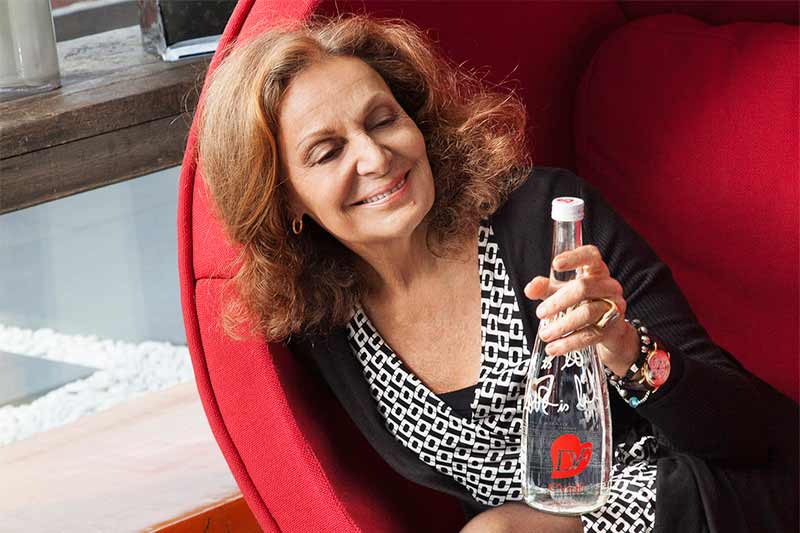
Diane wearing the same wrap dress today
TROVE: How would you characterize great design?
DIANE VON FURSTENBERG: There’s design and there’s art. Good design is total harmony. There’s no better designer than nature—if you look at a branch or a leaf, it’s perfect. It’s all function. Art is different. It’s about emotion. It’s about suffering and beauty—but mostly suffering!
TROVE: Do you think the current economic climate is good or bad for design?
DVF: A challenging economy is always good for design. It unites necessity and functionality. You are forced to be creative with poor materials.
TROVE: You created the wrap dress, one of the great problem-solving designs of the 20th century, during the early 1970s, another period of economic turmoil.
DVF: It’s more amazing to me now than it was then. It’s crazy that something has survived so long and continues to appeal to so many different young women. It’s still 15 percent of my business. It’s functional, extremely flattering, and very reliable. It’s definitely a good design. Anything that has survived that long is not hype.
TROVE: Did being a woman give you a better sense of how to design that dress?
DVF: Remember, I had no experience at the time. I had just gotten married, I was pregnant, and I was moving to America. But I wanted to be independent, so I asked this tycoon I had interned for if he would let me make a few samples that I would try to sell in America, and he said yes. Of course, the wrap has always existed. It’s the toga, the kimono, the dress without buttons or zippers. What was new about mine was that it was jersey, so it molded to the body, which made a woman feel very feline.
"Christian Lacroix once told me that women designers make clothes and men designers make costumes. I think that’s true."
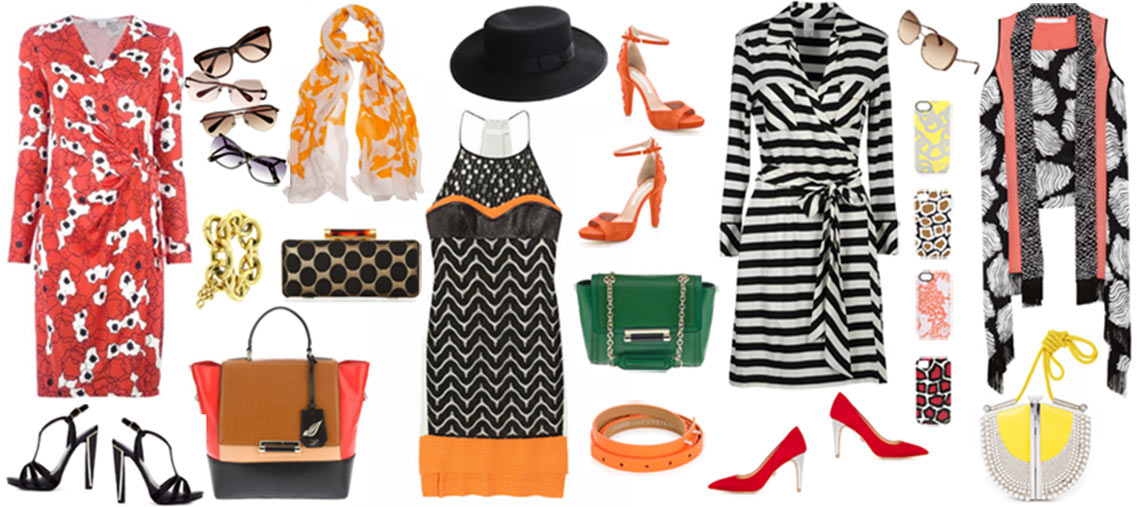
Select items from Diane Von Furstenberg's recent ready to wear collections
TROVE: What is the difference between how men and women design clothes?
DVF: Christian Lacroix once told me that women designers make clothes and men designers make costumes. I think that’s true.
TROVE: There’s plenty of design on runways that’s not very functional. When you see those clothes, what do you think?
DVF: It’s their problem, not mine.
TROVE: Where is the most exciting design happening?
DVF: I’d have to say Africa. They use and recycle everything there. The way they put things together—things that really have to work and perform a function—that to me is great design.
TROVE: Have you bought anything lately that you love?
DVF: The iPad! What is better designed than that? I read magazines on it, I play Scrabble. I use it for everything.
TROVE: Is that why you moved across from the Apple Store in the Meatpacking District?
DVF: I was there first. They followed me!
“Patterns are a natural for me,” she says. “I capture them from nature, through photography, then reinterpret them.”

Prints from the DVF Spring/Summer 2014 Collection

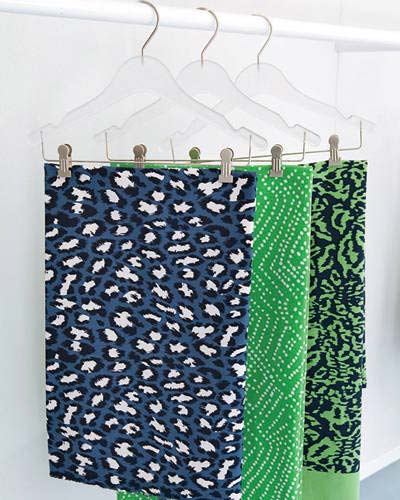
Spotted Cat, Batik, and Ikat Original fabrics from Diane von Furstenberg's textile collection, which is available at Nathan Turner
Diane von Furstenberg is on a roll—or more precisely a bolt of vivid, colorful upholstery fabric.
The New York fashion designer, who has been wrapping generations of stylish women in her pretty, patterned dresses, was so smitten with the bold ikats and florals she recently sent down the runway that she decided to bring them out of the closet and put them on chairs, pillows, and curtains. The 87 crisp, graphic cottons are a prelude to her collection of tableware, bedding, and bath accessories that arrives in stores early next year.
For Von Furstenberg, the fabrics were an opportunity to play with scale in a big way, offering checks small and large, blooms blown up or reduced in size, and animal prints in such otherworldly colors as hot pink, yellow, and lavender. “Patterns are a natural for me,” she says. “I capture them from nature, through photography, then reinterpret them.” Her runway favorites translated beautifully to interiors. “It’s all about mixing—scales, patterns, and colors,” she says. Not in the market to reupholster your furnishings? If you’re traveling to London, you can sink into one of the 20 guest rooms Von Furstenberg just decorated at the legendary Claridge’s hotel. The designer says it was kismet that she landed the plum assignment. “I have been a guest there for more than 30 years, and I was very honored they asked me,” she says. “It was a total love story, from beginning to end.”
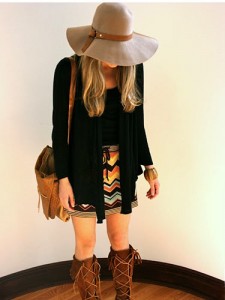
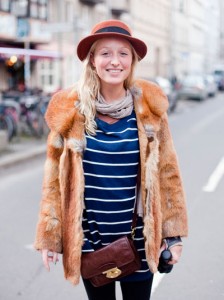



Comments are closed.